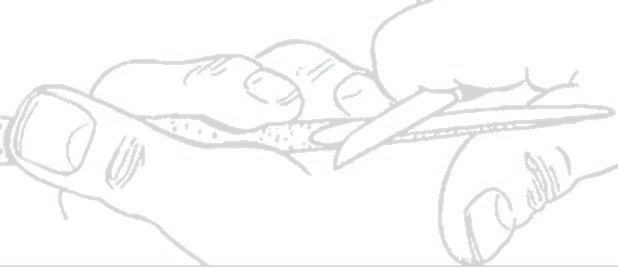Those who know me, know that I do small stuff. The Santa pins are a little over an inch in height. And the Leprechauns will be pins, that may be traded for pitchers of beer, on St Patricks day.
Now, for what sneaked into my mind, as I sat in the bright sun, with a more than slight breeze and whittled. There's nothin better than pure sun light to see what you are doing. And, a good breeze is a great way to get rid of wood chips.
When whittlin/carvin small, you must be extra careful with your knife blade to avoid breaking the tip. This is especially true when making short/tight curved stop cuts. What I'm talking about is a curve with a diameter of about 1/4th inch. I noticed that when I whittle with my knife and make very controlled cuts I am most of time using "opposing pressures" to make the cuts. And when I do this the veins on the top of my hands are much pronounced. However, when I make a tight curve/arched cut the veins are not pronounced. This is because I am not using hardly any pressure at all. How can this be? Well, I am not making a normal "slicing" cut. I am using a series of "connected stab cuts", with very little pressure. When I do this I am accomplishing two things. I am not stressing the wood too much, and do not put any "twist" on the blade tip. Stressing the wood causes splits and crumbling. Twist on the knife blade causes a broken blade tip.


No comments:
Post a Comment